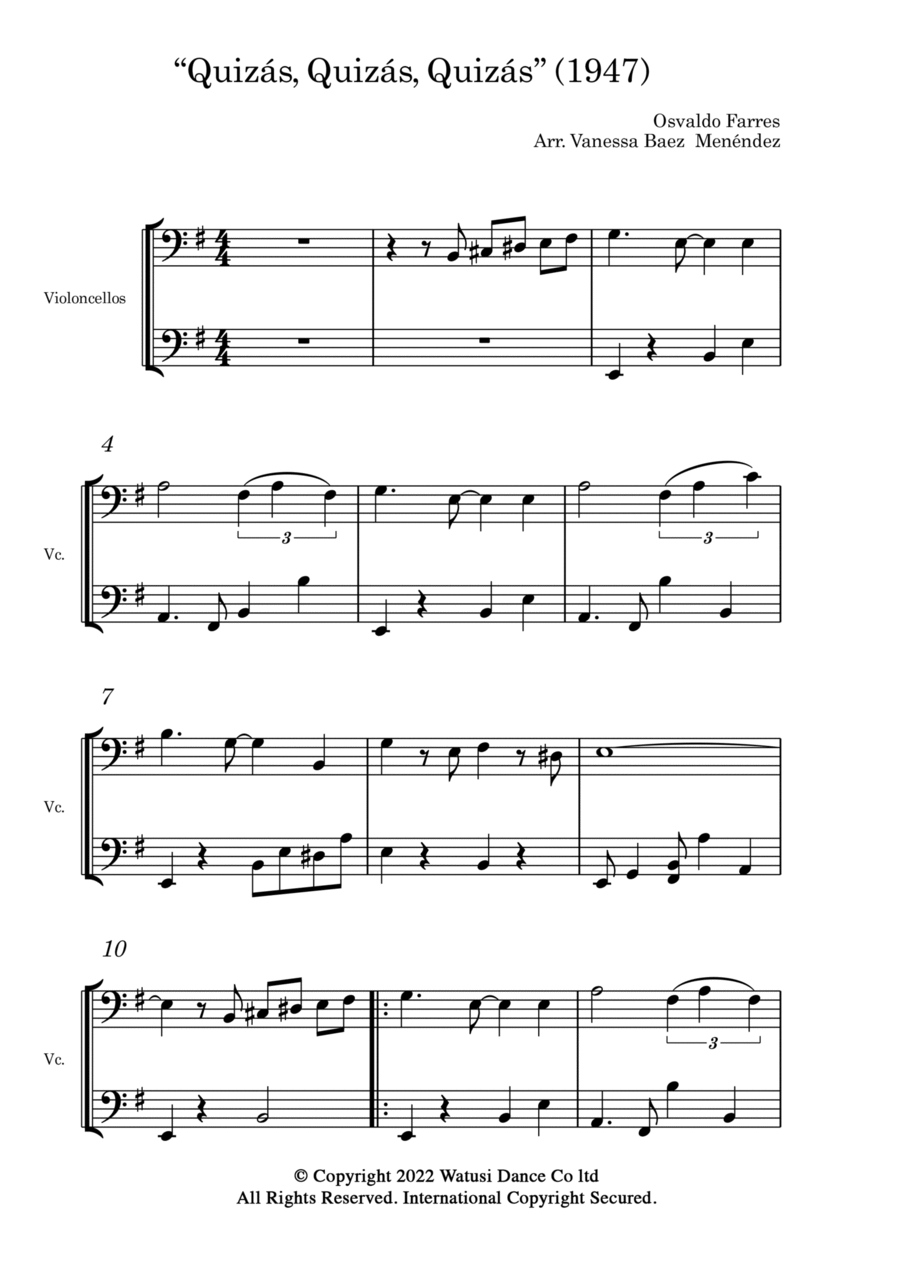Cello Duet Cello - Level 3 - Digital Download SKU: A0.1117313 By Osvaldo Farrés. By Osvaldo Farrés. Arranged by Vanessa Baez Menendez. 20th Century,Jazz,Latin,Multicultural,Traditional,World. Score. 3 pages. Madeleine Duba / Watusi Dance co ltd #718896. Published by Madeleine Duba / Watusi Dance co ltd (A0.1117313). Music notes featuring Cuban 20th century Cello Duets available to print and play instantly. A wide range from 1900's - 1960's of Cuban genres like Bolero's, Cha Cha's, Danzon's and Son's, shop our newest and most popular two cellos sheet music such as Besame Mucho (1941) - Cello Duet, QuizaÌs, QuizaÌs, QuizaÌs (1947) - Cello Duet and Frenesi (1939) - Cello Duet, Con tigo Aprendi (1967) - Cello Duet, Besame Mucho (1941) - Cello Duet, Sabor a Mi (1959) - Cello Duet and others. . . . . . . . . . . . . . . . . . . . . . . . . . . . . . . . . . . . . . . . . . . . . . . . . . . . . . . . . . . . . . . . . . . . . . . . . . . . . . . . . . . . . . . . . . . . . . . . . . . . . . . . . . . . . . . . . . . . . . . . . . . . . . . . . . . . . . . . . . . . . . . . . . Farrés was born in 1903 in the small city of Quemado de Güines, Las Villas, Cuba. Although unable to read or write music, he became a prolific and world-renowned composer. His songs include Quizás, Quizás, Quizás, Acércate Más, Tres Palabras, Toda Una Vida and his own favorite Madrecita written in honor of his mother and sung to this day in Latin America on Mother's Day. His songs have been performed and recorded by stars such as Doris Day, Nat King Cole, Natalie Cole, Eydie Gorme, Pedro Vargas, Raquel Bitton, Charles Aznavour, Luis Miguel, Maurice Chevalier, Sara Montiel, Olga Guillot, John Serry Sr., Cake[1][2] and many others. Charlie Haden included Tres Palabras on his Grammy-winning 2001 album Nocturne. In 1962, Farrés and his wife, Fina del Peso Farrés, left Cuba. They never returned. He died in West New York, New Jersey, in 1985.
